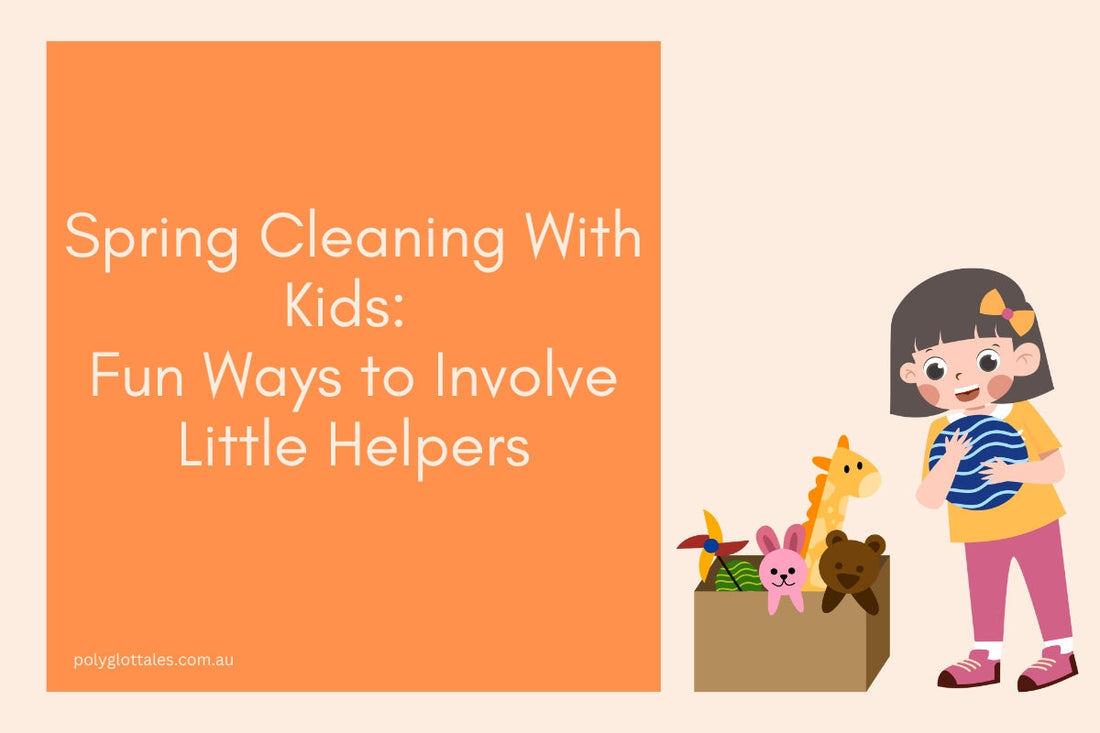Spring is the perfect time to refresh your home, but for parents of little ones, the thought of decluttering and tidying up can feel overwhelming. What if spring cleaning could be a fun, engaging activity for your children rather than a stressful chore? With a few creative approaches, you can turn tidying up into a playful, educational experience that teaches responsibility, teamwork, and routine.
Make Cleaning Playful
Kids love games, so why not turn chores into a fun challenge? Try these ideas:
-
Toy Treasure Hunt: Ask your child to find toys that belong in a specific box or shelf. Give them a little cheer or sticker reward for each “treasure” found.
-
Sorting Races: Turn sorting toys, books, or clothes by category or color into a timed game. It’s amazing how much faster kids can be when it feels like a race!
-
Music Motivation: Put on some upbeat tunes and let your child dance and tidy along. Cleaning with a rhythm makes the task much more enjoyable.
Teach Responsibility Through Routine
Involving children in household tasks helps them understand responsibility and the importance of routines. Even toddlers can participate in small ways, like putting away their shoes, wiping down surfaces with a damp cloth, or helping fold laundry. Over time, these small contributions build a sense of pride and independence.
Books can also reinforce these lessons. For example, the “Koguma no Kuupii ehon” series by Miwa Nakaya, available on Polyglot Tales, beautifully illustrates themes of teamwork, routine, and responsibility. Reading a story before or after a cleaning session can inspire children to help in meaningful ways.
Make Decluttering an Adventure
Decluttering can feel like a big job, but breaking it down into smaller steps makes it manageable for little helpers:
-
The “Keep, Donate, Toss” Game: Give your child three boxes and ask them to decide which toys to keep, which to donate, and which need to be recycled. This encourages decision-making and generosity.
-
One Area at a Time: Focus on one shelf, bin, or drawer at a time to prevent overwhelm and keep the momentum going.
-
Celebrate Progress: Take before-and-after photos or let your child choose a fun activity once a section is complete.
Learning Through Play
Spring cleaning with children isn’t just about a tidy home—it’s also a chance to teach important life skills in a playful way. Sorting, organizing, and putting things away strengthens fine motor skills, problem-solving, and language development. For bilingual families, incorporating books in multiple languages, like Hindi, Italian, Japanese, and Chinese, adds an extra layer of learning. Children associate words with actions, routines, and responsibilities, making chores a natural part of their development.
Tips for Busy Australian Parents
-
Short Sessions Work Best: Kids have short attention spans, so 10–15 minute cleaning sessions often work better than long marathons.
-
Be Consistent: Regular, small clean-ups prevent clutter from piling up and keep children engaged.
-
Lead by Example: Children imitate adults. Show enthusiasm and positivity—it’s contagious!
-
Celebrate Achievements: Praise effort, not just results. A happy, engaged child is more likely to want to help again.
Spring cleaning doesn’t have to be a solo job. By involving children in playful, structured ways, you can create a cleaner home, teach responsibility, and even have some fun along the way. And remember, pairing these activities with bilingual storybooks from Polyglot Tales, like “Great job えらいねくうぴい”, makes chores a learning opportunity that benefits both language and life skills.


